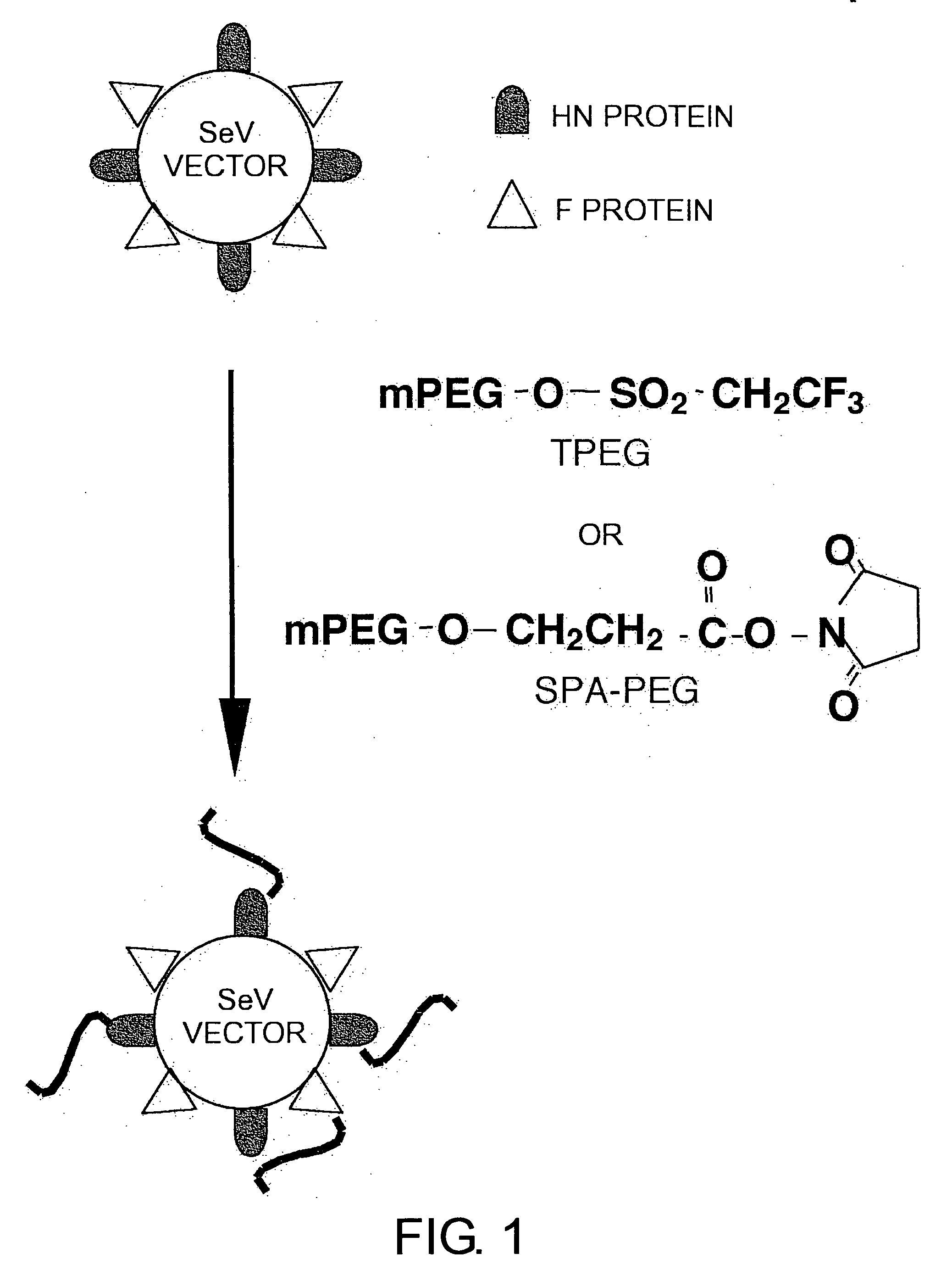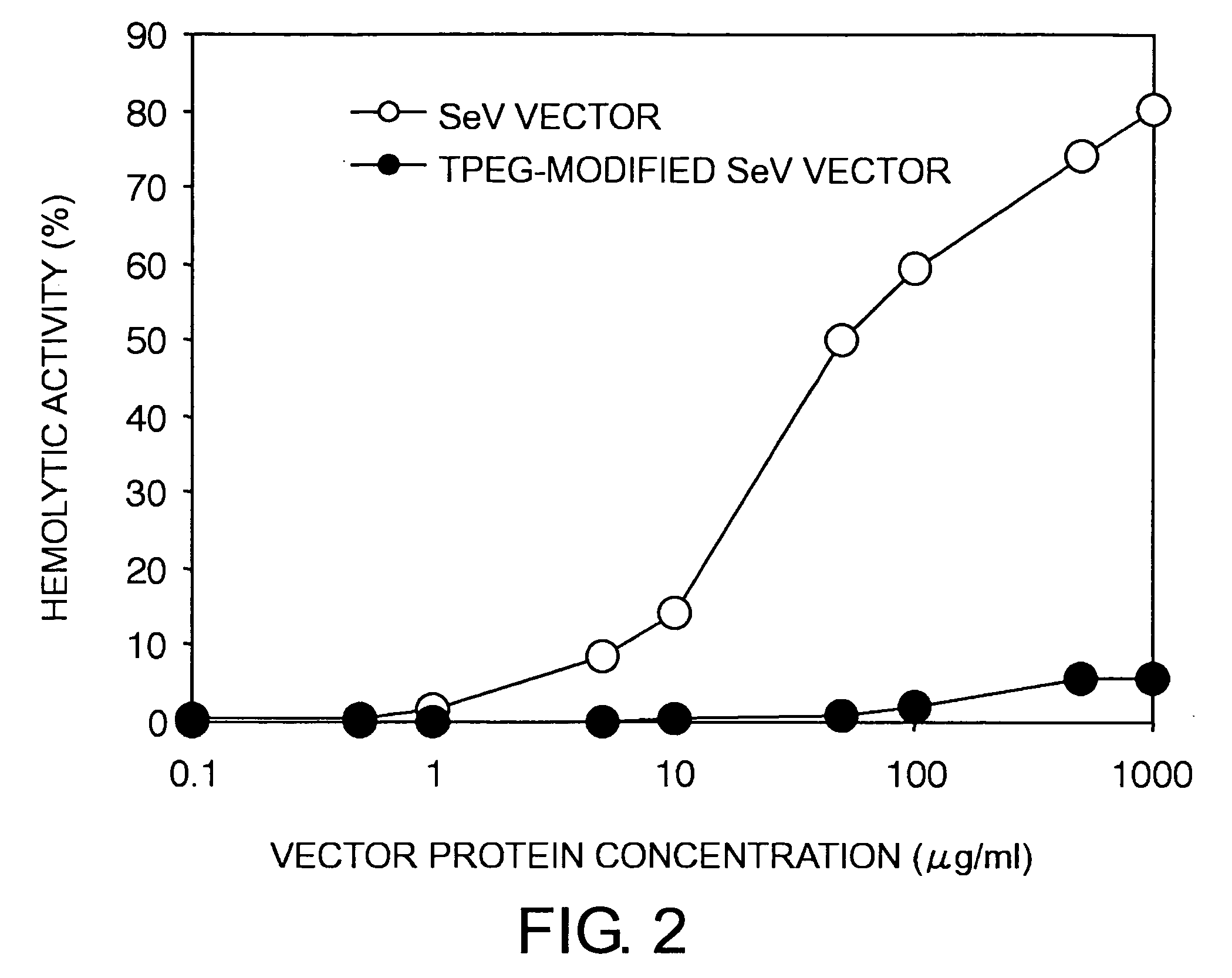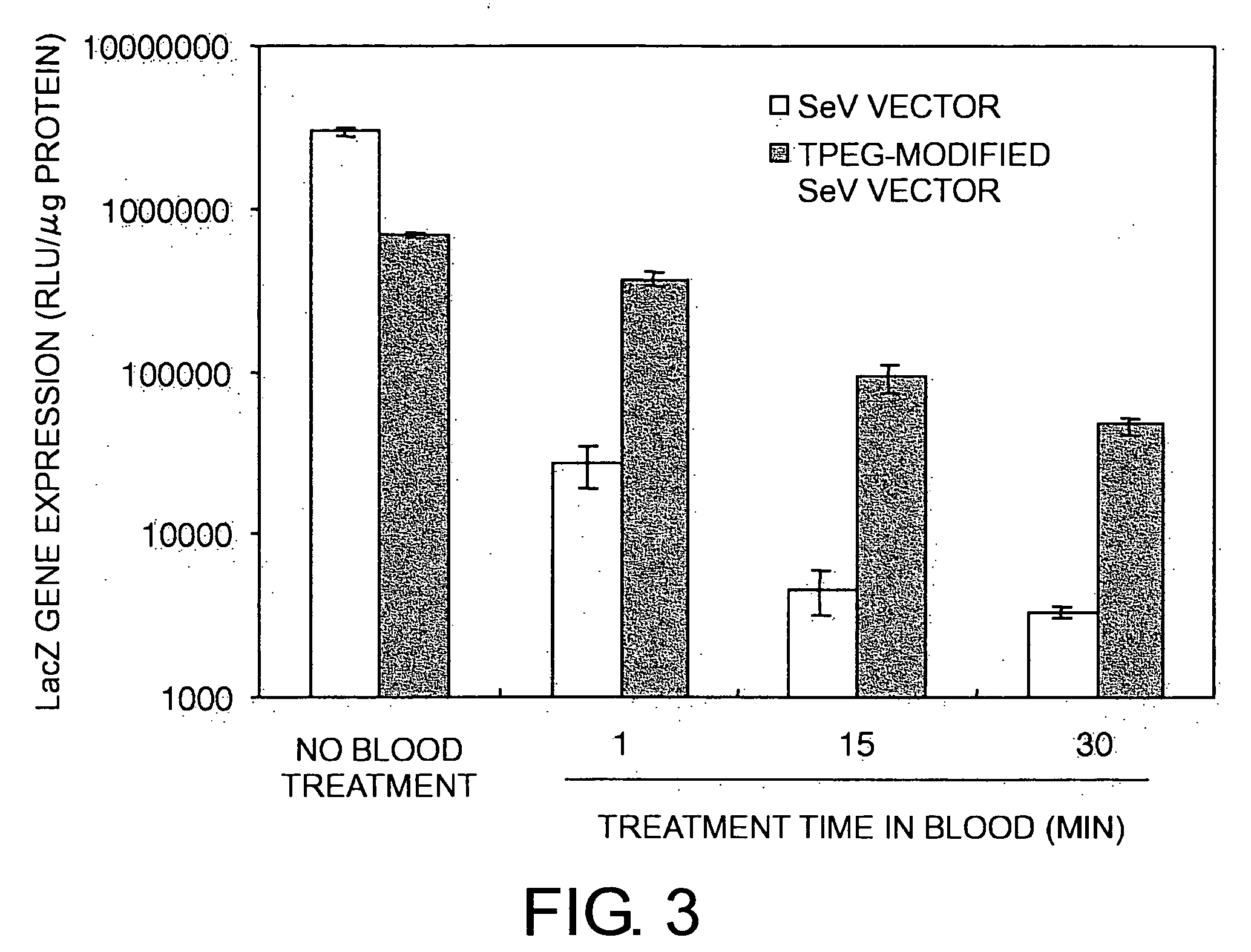Pharmaceutical- or gene-carrier compositions with reduced hemagglutinating activity
- Summary
- Abstract
- Description
- Claims
- Application Information
AI Technical Summary
Benefits of technology
Problems solved by technology
Method used
Image
Examples
example 1
Preparation and Purification of SeV Vector Comprising NLS-LacZ Gene
[0120] NLS-LacZ / SeV carrying LacZ gene with a nuclear localization signal (NLS-LacZ) was prepared by a previously published method (Kato et al., Genes Cells, 1996, 1, 569-579; Hasan et al., J. Gen. Virol., 1997, 78, 2813-2820). This vector was inoculated to 10-day-old embryonated hen eggs. After incubation at 35.3° C. for three days, allantoic fluids were harvested, and centrifuged at 4,000 rpm for 15 minutes. The obtained supernatant was then centrifuged at 10,000 rpm for one hour to precipitate the vector. After resuspension in PBS, the vector was layered on a sucrose density gradient (30% / 50%), and centrifuged at 25,000 rpm for one hour (in a Beckman rotor SW28). The vector at the sucrose interface was harvested, centrifuged, precipitated, and then resuspended in PBS to prepare a stock solution of purified vector (hereinafter, described as SeV vector). The protein concentration of the vector was measured by a BCA...
example 2
Preparation of TPEG-Modified SeV Vector
[0121] The SeV vector stock solution in Example 1 was diluted to 2 mg protein per ml in PBS. 0.5 ml of 0.5 M borate buffer (pH8.5) was added to 0.5 ml of this solution to prepare a 1 mg protein / ml solution of pH8.5. 1 mg of Tresyl-activated PEG reagent (TPEG, MW: 5,000) (Shearwater Polymers) was added to the above-described solution in small amounts while stirring, and reacted at room temperature for 90minutes (FIG. 1). After the reaction was completed, the reaction mixture was diluted with ice-cold PBS (14 ml), and the vector was recovered by centrifuging at 15,000 rpm for one hour (in a Beckman rotor SW28.1). The vector was resuspended in PBS (0.8 ml), and the TPEG-modified SeV vector was obtained. Protein concentration and HAU of the modified vector were determined as in Example 1.
example 3
In Vitro Gene Expression Using TPEG-Modified SeV Vector
[0122] The SeV vector stock solution in Example 1 was diluted to 1×105 pfu / ml in PBS. The protein concentrations of the TPEG-modified SeV vector solution in Example 2 and the unmodified SeV vector solution were normalized, thus rendering an equal number of virions for both vectors. The day before the experiment, HeLa cells (derived from human cervical carcinoma) were plated on a 12-well plate (Sumitomo Bakelite) at 5×104 cells / well (in 1 ml / well of MEM medium supplemented with 10% inactivated fetal calf serum (FCS)). The medium was reduced to 0.5 ml, 50 μl of the above-described diluted vector solutions were added to each well (equivalent to 5×103 pfu / well when converted into SeV vector, moi=0.1), and infection was carried out at 37° C. in the presence of 5% CO2. After one hour, the vector was removed and the cells were washed twice with medium. Fresh medium (2 ml) was added to the cells, which were then further incubated at 37...
PUM
| Property | Measurement | Unit |
|---|---|---|
| Fraction | aaaaa | aaaaa |
| Fraction | aaaaa | aaaaa |
| Fraction | aaaaa | aaaaa |
Abstract
Description
Claims
Application Information
 Login to View More
Login to View More - R&D
- Intellectual Property
- Life Sciences
- Materials
- Tech Scout
- Unparalleled Data Quality
- Higher Quality Content
- 60% Fewer Hallucinations
Browse by: Latest US Patents, China's latest patents, Technical Efficacy Thesaurus, Application Domain, Technology Topic, Popular Technical Reports.
© 2025 PatSnap. All rights reserved.Legal|Privacy policy|Modern Slavery Act Transparency Statement|Sitemap|About US| Contact US: help@patsnap.com



